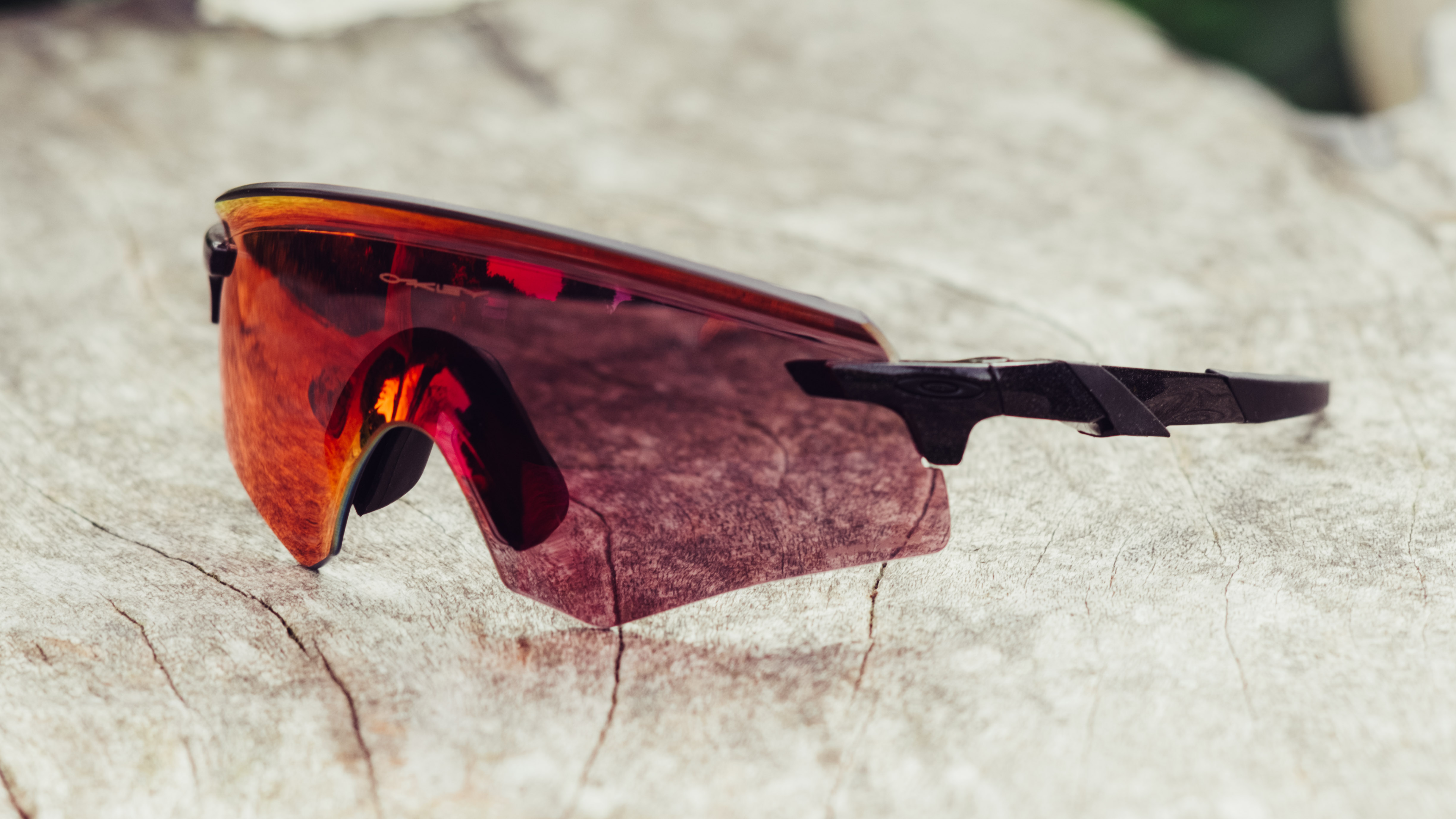Cyclingnews Verdict
Excellent retention and optics but let down by an intrusive nosepiece
Pros
- +
Brilliant retention
- +
Excellent lens clarity
- +
Performance in high and low light
Cons
- -
Nosepiece encroaches on view
You can trust Cyclingnews
One criticism that I hear about Oakley is that the company simply has too many models, and the Encoder is a new option that had - until recently - slipped under my radar. Visually at least they appear to be a slightly more mellow version of the radical Oakley Kato that we reviewed recently, or an evolution of that model depending on how you view things. From my testing, I’m inclined to err towards the latter, as a few key shortcomings that I found in the Kato have been rectified with the Encoder.
Billed as a ‘multisport’ pair of glasses, the Oakley Encoder is up there with the best cycling glasses that I’ve used but, while I found them excellent, there are a few issues that hold them back from being truly exceptional.
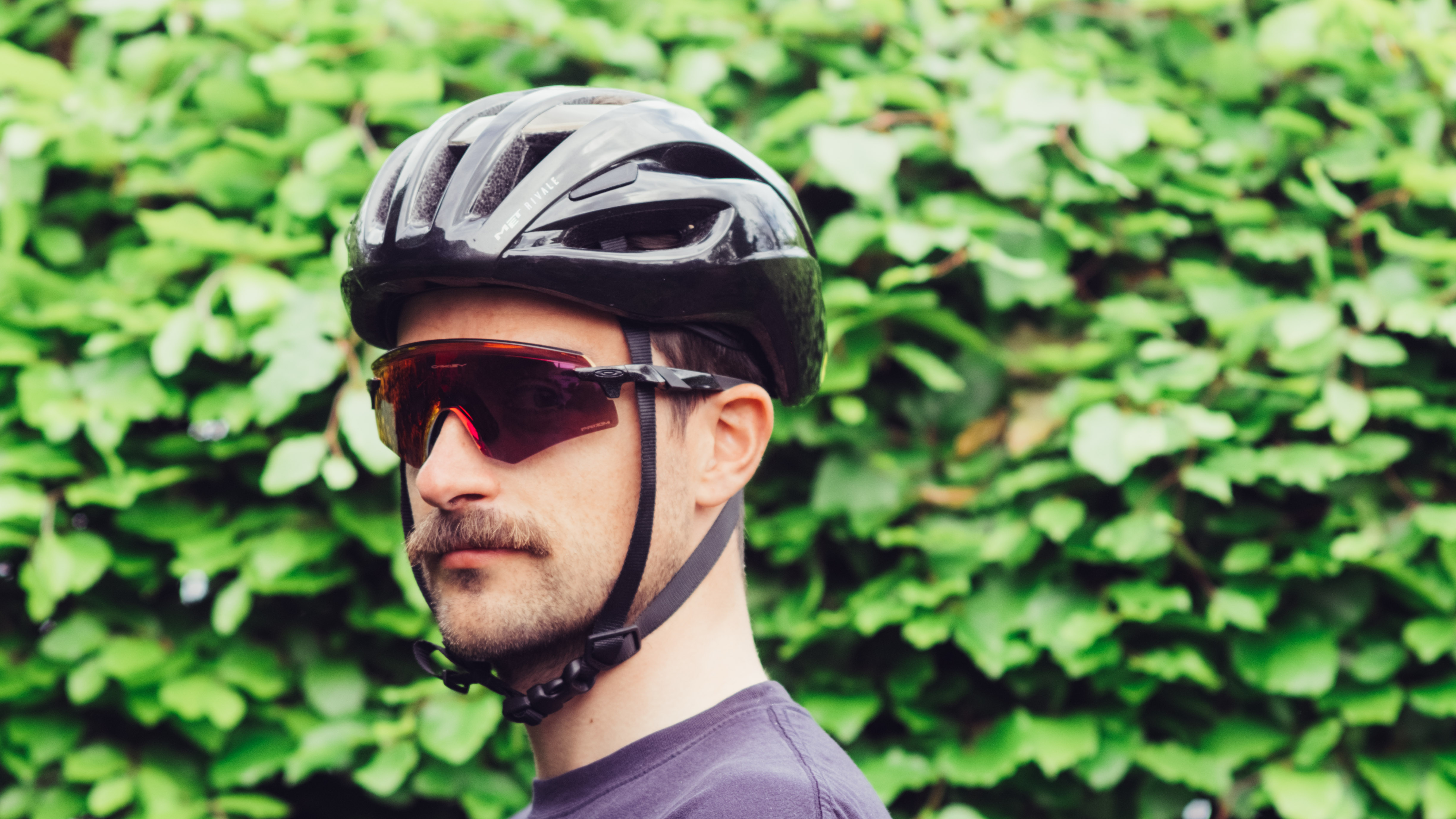
Design and aesthetics
It’s easy to see a direct design lineage from the Oakley Kato to the Encoder. They both feature a similar frameless mono-lens design with a distinctive ridge along the upper edge (more on this to come). The lens on the Encoder is slightly less radical however; the wrap is less severe, the lens is deeper, and gone is what I’m going to call the nose shield for want of a better phrase. Below the nosegrip, however, the lens is still slightly deflected outwards in a lightly Darwinian nod to the previous generation, though in this case it isn't enough to cause any issues with lens distortion.
In classic Oakley style, the arms are arrow straight while viewed from the side, and heavily curved inwards, designed to hug the back of the head more than hook behind the ears. The rear sections are sleeved in grippy rubber, and interestingly there is also a block of rubberised material on each arm close to the hinge. Aesthetically these bothered me, as they don’t flow with the arms but, rather, they jut out at an angle. I believe they’re designed to grip helmet vents and provide a grip for putting the glasses on and off, but I didn’t really find them hugely useful for either application. The arms aren’t adjustable, though without the nose shield there isn’t really a need to adjust the yaw of the lens, as the replaceable nosepieces allow enough fine tuning of the fit already.
They ship with a single lens, but they do at least appear to be replaceable if you wanted to change to suit different conditions. There isn’t a simple lens swap system as with many Oakley models though, and I didn’t try removing mine for fear of snapping something. This isn't necessarily because they feel fragile, but more because the system to remove the lens appears to require some extreme bending. They're not designed to be regularly swapped over, to the point that Oakley doesn't include any instructions around how to do it.
One design point that I’m a big fan of is the upper ridge, the purpose of which eluded me initially. If you flex other frameless sunglasses, taking the EVZero from Oakley or the Hypercraft from 100% as examples, you’ll find you are easily able to bend the arms out away from each other. The Encoder however, like the Kato, is significantly more resistant to flexion, and I think it’s down to the ridge. Think of it like a plain sheet of A4 paper: Without any modification it’s just a floppy bit of paper, but if you fold a ridge along the middle it’s much more resistant to bending along the axis of the ridge. This is why the Encoders, much like the Katos, have such exceptional retention for a frameless pair of glasses.
On a purely style basis, I am on board with the Encoders. The Katos were too Robocop for my liking, but these are bold but without going over the top.
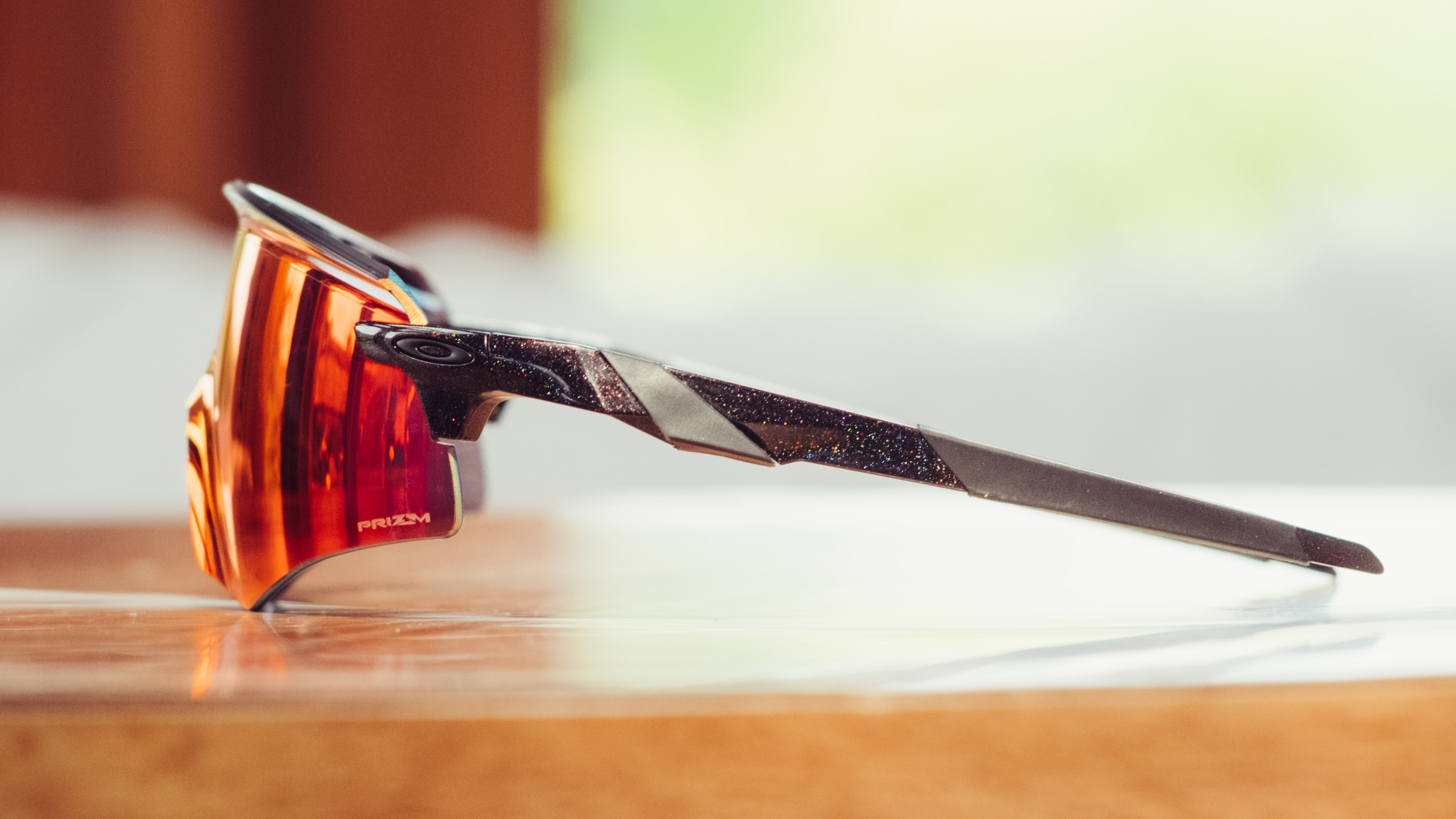
Performance
If you’re only getting a single lens shipped with cycling glasses nowadays you’d better make sure it’s a good one. The Prizm Road lens, in terms of its photic properties, is the best all-round lens I've used. In low-light conditions you can continue to get the wind shielding properties of the large lens even in that twilight time for 20 minutes after the sun has gone down. It won’t be as clear as a clear lens, but it’s more than adequate for a lens that also performs exceptionally well in bright sun. It’s not as dark as the Prizm 24k (Oakley’s mirrored gold option), but unless you live in an extremely arid climate, devoid of the joy of an overcast sky, I’d take the Prizm Road every time.
While the Kato was too shallow, the Encoder lens is plenty deep enough to give a respectable field of view without staring at the edge of a frame in extreme riding positions. This is slightly marred by the nosepiece and the arms encroaching too far into the peripherals. The nosepiece features a large rubber flange that sits flush with the lens and covers the majority of that part of the nose area that is curved. It sits in your eyeline and, while it doesn't actually block you from seeing anything, once you notice it’s there it’s a bit like someone pointing out that your tongue is resting on the roof of your mouth; you continue to be aware of it until sufficiently distracted. The same goes, to a lesser extent, for the arm mounts. The inner portion extends significantly further than the outer, in what I assume is part of the lens removal system but it just sat in my eyeline enough to notice it semi-frequently.
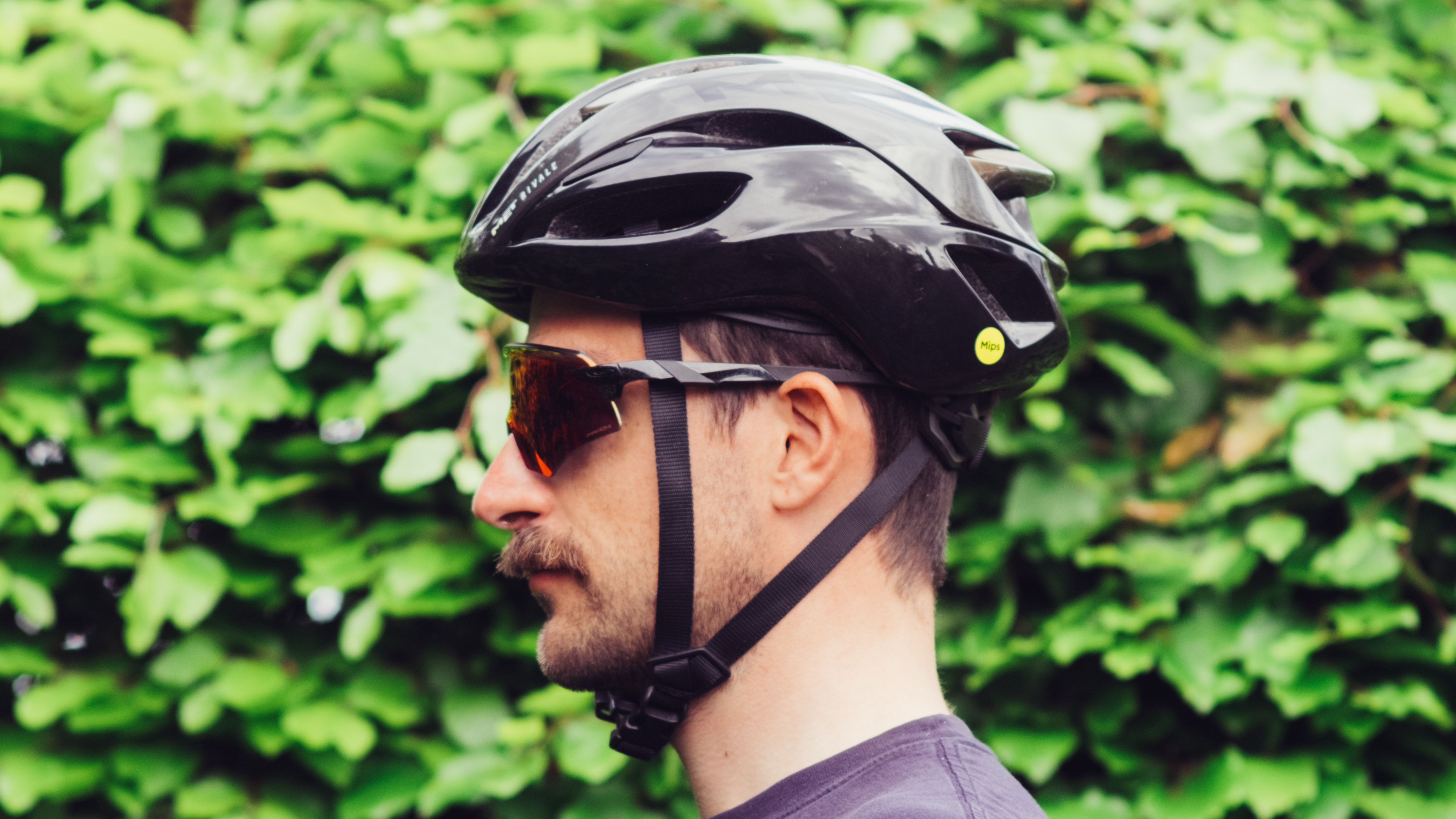
At speed, there were mercifully none of the wind issues I experienced with the Katos, which was a big relief. The retention was also exceptional, which I put down to the lens ridge as much as the tenacious nosepiece. I’ve a small head, so this is always a big issue for me, and it was also a relief to find the arms didn’t interfere with my helmet like so many other glasses tend to do. The curve of the arms meant they hugged the bulge of my head rearwards of my ears, rather than resting on the ears themselves, which was also a great boost to all-day comfort.
I can’t say if this will be the case for those of you with bigger heads but, for me, it was a bonus. One thing I did find while transferring the glasses from eyes to helmet vents (which it clung onto well enough) was the rubber sleeves on the arms were incredibly bitter tasting. It’s hardly something which sports glasses designers are likely to consider, but it’s not something that I’ve experienced before so it’s worth noting, especially if like me you often transfer one arm into your mouth to adjust your grip.
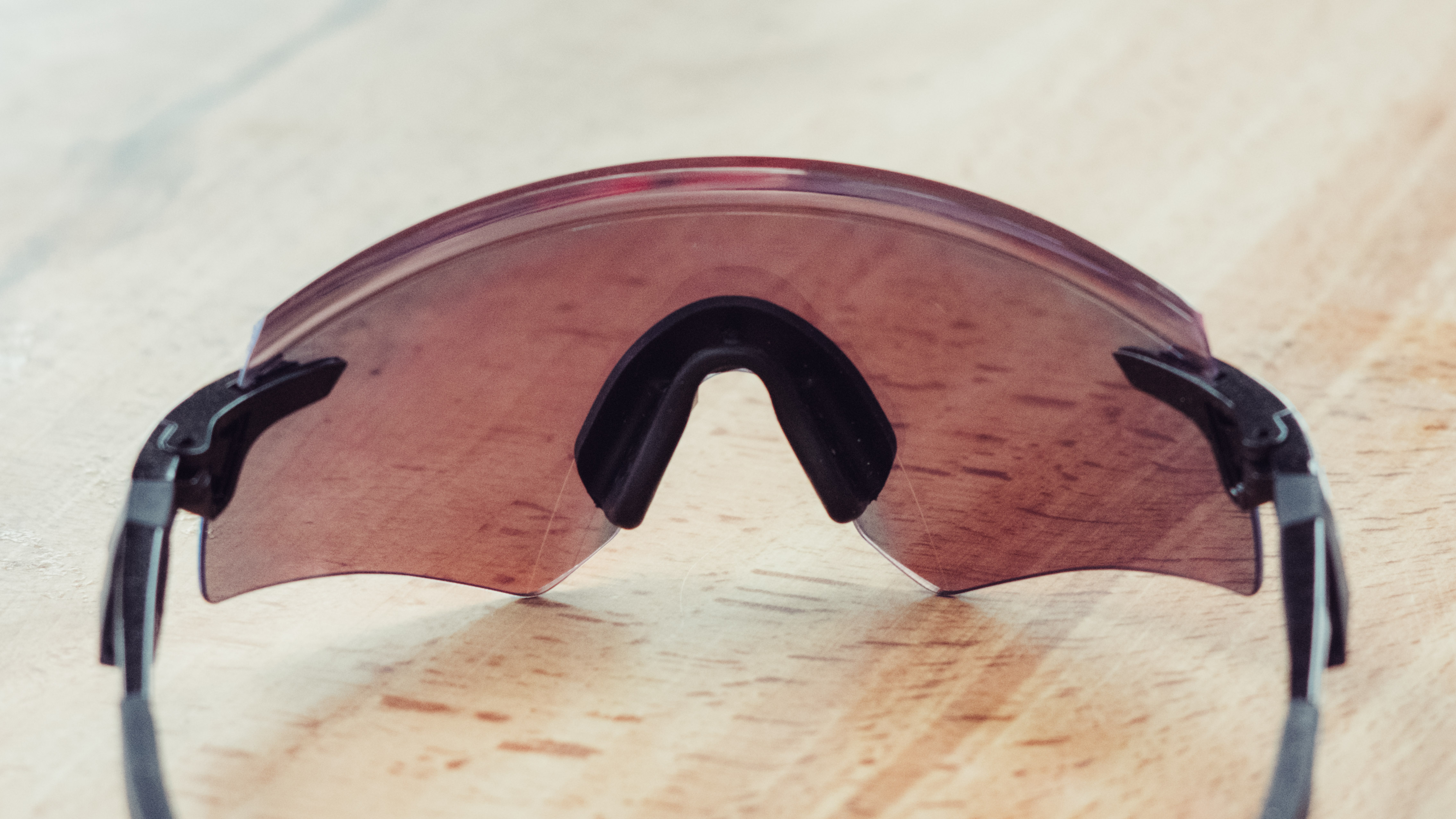
Verdict
If you’ve got a small head these really are a great option. Exceptional retention combined with brilliant lens optics and performance across a great range of light conditions makes for a compelling package - but the nosepiece is just too large to look past as an issue.
Aesthetically, however, they’re on the money for me. A big shiny lens, but not so out there that people will look at you like you’re in fancy dress. A great improvement over the Kato, and to my mind a worthy successor to the original Oakley Radars as the default pair of performance glasses for most users.
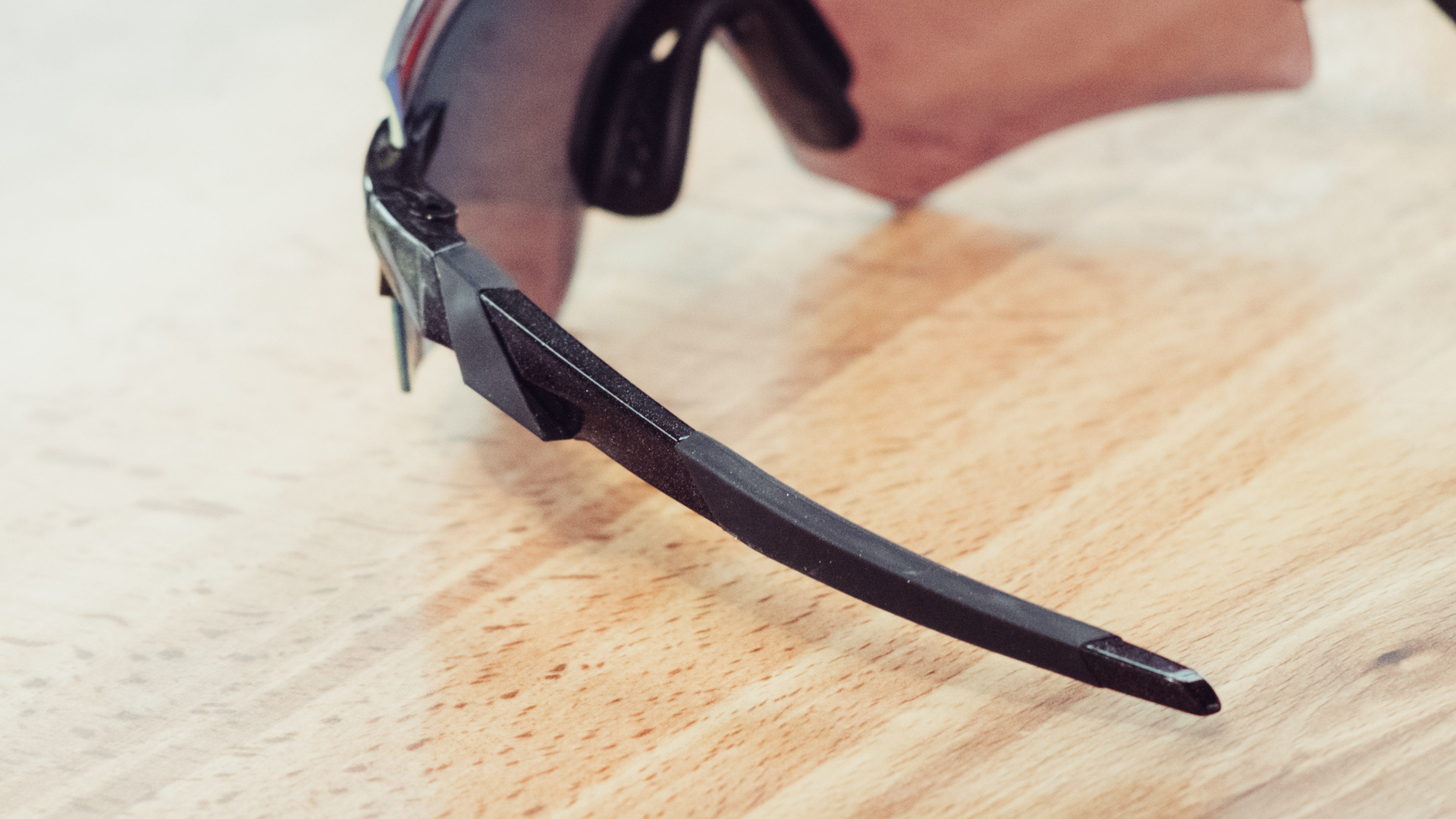
| Attributes | Notes | Rating |
|---|---|---|
| Design and aesthetics | Classic oakley styling without being too radical | 9/10 |
| Field of vision | Mostly good but the nosepiece sits in the eyeline | 8/10 |
| Lens performance | Excellent clarity and contrast, brilliant across a range of light conditions | 9/10 |
| Comfort and retention | Never slipped, played nicely with a helmet and could wear them for 12hrs straight | 9/10 |
| Value for money | Now they are a little older you can pick them up for a very good price | 9/10 |
| Overall rating | Row 5 - Cell 1 | 88% |
Tech Specs: Oakley Encoder sunglasses
- Price: £210 / $257
- Weight: 30.5g (actual)
- Colour Options: White / Prizm Sapphire, Black/ Prizm Black, Black / Prizm Golf, Black / Prizm Road, Red / Prizm Trail, Black / Prizm Field, Black Galaxy / Prizm Road, Carbon / Prizm 24k

Will joined the Cyclingnews team as a reviews writer in 2022, having previously written for Cyclist, BikeRadar and Advntr. He’s tried his hand at most cycling disciplines, from the standard mix of road, gravel, and mountain bike, to the more unusual like bike polo and tracklocross. He’s made his own bike frames, covered tech news from the biggest races on the planet, and published countless premium galleries thanks to his excellent photographic eye. Also, given he doesn’t ever ride indoors he’s become a real expert on foul-weather riding gear. His collection of bikes is a real smorgasbord, with everything from vintage-style steel tourers through to superlight flat bar hill climb machines.
